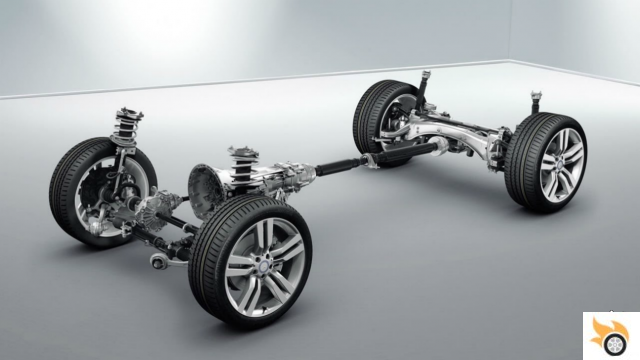
Welcome to our article on vehicle suspension systems. In this text, we will address the different search intentions related to this topic, providing detailed information and explanations about the definition, elements, types, function, utility, and possible breakdowns of this system.
Definition and elements of the suspension system
We will begin by defining what the suspension system of a vehicle is. The suspension is the set of elements in charge of absorbing the irregularities of the terrain and maintaining the stability of the vehicle. It is made up of different components, such as shock absorbers, springs, stabilizer bars, suspension arms and ball joints. Each of these elements fulfills a specific function to guarantee a comfortable and safe trip.
Types of suspension systems
There are several types of suspension systems used on vehicles. The most common are independent suspension and rigid suspension. Independent suspension allows each wheel to move independently, improving driving stability and comfort. On the other hand, the rigid suspension connects the wheels of the same axis, which can result in a firmer but less comfortable ride on uneven terrain.
independent suspension
Independent suspension is divided into several subtypes such as McPherson suspension, double wishbone suspension, and multi-link suspension. Each of these systems has its own characteristics and advantages, and are used in different types of vehicles depending on their needs and performance.
rigid suspension
Rigid suspension, also known as rigid axle, is used primarily on off-road vehicles and trucks. Although it may be less comfortable on smooth roads, it offers greater strength and durability on rough terrain.
Function and utility of the suspension system
The suspension system serves several important functions in a vehicle. In addition to absorbing uneven terrain, it also helps maintain wheel contact with the road surface, improving traction and stability. It also helps reduce driver and occupant fatigue, providing a smoother, more comfortable ride.
In addition to its main function, the suspension system also has other uses. For example, it contributes to vehicle safety by improving braking capacity and handling. It also helps protect other vehicle components, such as the bodywork and the steering and braking systems, by absorbing shocks and vibrations generated by vehicle movement.
Possible faults in the suspension system
Although the suspension system is designed to be durable and strong, it can fail due to wear, impact, or poor maintenance. Some of the most common failures include damping dampers, broken springs, worn ball joints, and deformed suspension arms.
It is important to be alert for signs of possible suspension system failure, such as excessive vibration, abnormal noise, irregular tire wear, or difficulty maintaining control of the vehicle. In the event of any indication of a problem, it is advisable to go to a specialized workshop to carry out an adequate review and repair.
Frequently Asked Questions (FAQs)
1. What is the useful life of a suspension system?
The useful life of a suspension system can vary depending on several factors, such as the type of driving, road conditions and proper maintenance. In general, it is estimated that the shock absorbers have a useful life of approximately 80,000 to 100,000 kilometers, while the springs can last between 150,000 and 200,000 kilometers. However, it is important to note that these values are only estimates and may vary from case to case.
2. What can I do to keep my suspension system in good condition?
To keep your vehicle's suspension system in good condition, it is advisable to follow some maintenance guidelines. First of all, it is important to carry out periodic reviews in a specialized workshop to detect possible problems in time. In addition, it is essential to respect the manufacturer's recommendations regarding the change of shock absorbers and other components. It is also advisable to avoid rough or aggressive driving, as this can accelerate wear on the suspension system.
Conclusion
In summary, the vehicle suspension system is a set of elements that play a fundamental role in driving comfort, stability and safety. Knowing its definition, elements, types, function, utility and possible breakdowns allows us to understand the importance of keeping it in good condition and making the necessary repairs when necessary. Remember that a suspension system in good condition contributes to a safer and more comfortable trip.
We hope this article has been useful and has resolved your doubts about the suspension system of vehicles. If you have any additional questions or want to share your experience, feel free to leave a comment below. We will be happy to read you!
Until next time!


























